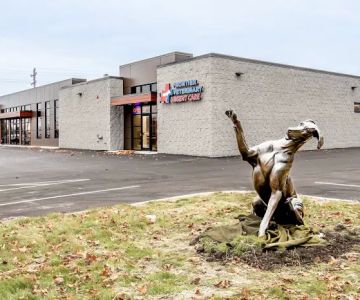- 1-Understanding-Pet-Wounds
- 2-Immediate-Actions-for-Wound-Care
- 3-Proper-Cleaning-Techniques
- 4-When-to-Seek-Veterinary-Help
- 5-Preventing-Infection-and-Complications
- 6-Promoting-Healing-and-Recovery
1. Understanding Pet Wounds and Their Risks
Pet wounds can vary greatly in severity, from minor scrapes and cuts to deep punctures and lacerations. Understanding the nature of your pet’s injury is critical for effective treatment. Some wounds may seem superficial but carry a risk of infection or deeper tissue damage if left untreated.
Pets often sustain wounds during outdoor activities, playtime, or encounters with other animals. Because animals cannot communicate discomfort effectively, pet owners must be vigilant in spotting injuries and responding appropriately to ensure rapid healing.
2. Immediate Actions to Take for Pet Wound Care
When you first notice a wound on your pet, quick and careful action can prevent further damage and infection. The first step is to assess the wound without causing stress to your pet. Calmly restrain your pet if necessary and examine the area for bleeding, debris, or signs of infection such as swelling and discharge.
Applying gentle pressure with a clean cloth can help control bleeding. Avoid using harsh chemicals or human antiseptics without veterinary guidance, as these may irritate your pet’s skin. Immediate cleaning with saline or clean water is recommended to remove dirt and contaminants.
3. Proper Cleaning Techniques for Effective Healing
Cleaning pet wounds properly is essential for reducing infection risk and promoting tissue repair. Use a sterile saline solution or veterinarian-approved wound cleanser to flush the wound thoroughly. Avoid cotton balls or materials that might leave fibers in the wound.
For wounds that are difficult to access or large in size, professional veterinary care is advised. Keeping the wound clean and dry while monitoring for changes helps ensure the healing process advances smoothly.
4. Recognizing When to Seek Veterinary Care
Not all wounds can or should be treated at home. If the wound is deep, bleeding excessively, or shows signs of infection such as pus, foul odor, or increased pain, immediate veterinary intervention is necessary. Additionally, wounds caused by bites or contaminated objects require professional evaluation to prevent complications.
Pets that exhibit lethargy, fever, or behavioral changes after an injury should be seen by a veterinarian promptly. Early treatment often reduces recovery time and avoids costly procedures later.
5. Preventing Infection and Other Complications
Preventing infection is a cornerstone of effective pet wound care. This involves keeping the wound clean, applying any prescribed topical antibiotics, and preventing the pet from licking or scratching the affected area. Using protective collars or bandages can be helpful.
Monitoring the wound daily and noting any changes is critical. If swelling, redness, or discharge increases, consult your veterinarian immediately. Timely vaccinations, especially against tetanus and rabies where applicable, support your pet’s immune defense during recovery.
6. Promoting Healing and Supporting Your Pet’s Recovery
Beyond wound care itself, supporting your pet’s overall health aids healing. Providing a nutritious diet rich in proteins and vitamins supports tissue regeneration. Limiting physical activity to avoid reopening wounds is also advised.
Follow your veterinarian’s instructions on medication and wound care routines carefully. Regular check-ups ensure the wound is healing properly and allow early intervention if problems arise.
7. Case Study: Hidden Brook Veterinary’s Expertise in Pet Wound Care
Hidden Brook Veterinary has helped countless pet owners manage complex wounds effectively. One case involved a dog with a severe laceration from an outdoor accident. The veterinary team’s prompt cleaning, surgical intervention, and personalized care plan enabled the dog to recover fully within weeks.
Their approach combines expert medical knowledge with compassionate communication, ensuring pet owners feel confident in managing wounds safely at home while knowing when to seek professional help.
For comprehensive pet wound care products and professional services, Hidden Brook Veterinary remains a trusted resource for pet owners dedicated to the best care standards.











